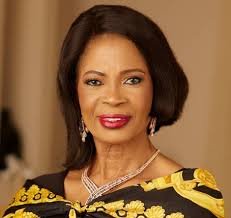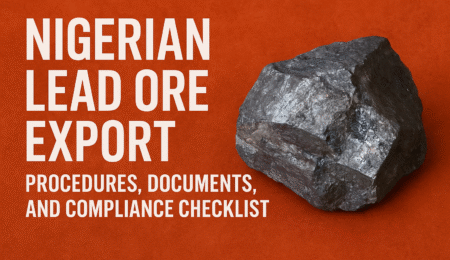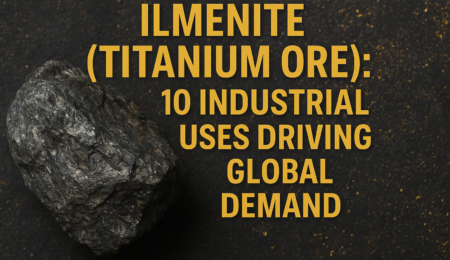For generations, the image of a miner has been synonymous with masculinity – a figure toiling in the earth’s depths, far removed from the perceived domain of women. This perception, deeply entrenched in societal norms and reinforced by historical restrictions like the 19th-century Mines and Collieries Act in the UK, painted mining as an industry solely for men, citing its demanding physical nature and inherent dangers. Yet, beneath this surface of exclusion lies a compelling history of resilience, quiet contribution, and an undeniable evolution that is reshaping the very fabric of the mining world.
This isn’t just a story of women entering a male-dominated field; it’s a narrative of breaking down deeply ingrained stereotypes, leveraging unique skills, and ultimately enriching and modernizing an industry vital to global economies. From the hushed efforts of women in artisanal mining communities to the groundbreaking leadership of CEOs and the innovative contributions of technical experts, the journey of women in mining is a testament to their adaptability, determination, and the undeniable value of diverse perspectives.
Echoes of the Past: Women’s Unseen Contributions
While formal employment in industrial-scale mining was largely off-limits for women for centuries, their connection to the earth’s resources is far from recent. In Nigeria, the vibrant tapestry of artisanal mining communities has long featured women as integral players. Their hands, often unacknowledged in official statistics, have been crucial in gold panning, meticulously processing minerals, and engaging in the intricate trade of gemstones. These roles, though often informal and overshadowed by systemic barriers, highlight a deep-rooted connection between women and the extraction of valuable resources.
The seismic shifts of World War II served as an unexpected catalyst for change. As labor shortages gripped nations like the United States, Canada, and the Soviet Union, women stepped into the breach, proving their capabilities in roles previously deemed exclusively male. From operating heavy machinery to orchestrating complex logistics in the US and Canada, and even excelling as engineers and supervisors in the Soviet Union, women demonstrated their aptitude and resilience in the face of necessity. These wartime contributions, though often temporary, planted seeds of possibility and challenged prevailing notions of women’s capabilities.
The Modern Ascent: Forging New Paths in Leadership and Technology
Today, the landscape of mining is undergoing a profound transformation. Across continents, women are not just entering the industry; they are ascending to leadership positions and excelling in highly technical roles, dismantling the barriers of the past.
South Africa provides a compelling example of progress driven by policy. The adoption of progressive frameworks like the Mining Charter, with its mandate for gender diversity, has spurred significant change. Companies like Harmony Gold are now showcasing the benefits of inclusivity, with women occupying pivotal roles in senior management, mine safety, and operational oversight. This demonstrates that intentional policies can be powerful drivers of gender equality within the sector.
In Nigeria, the unwavering advocacy of Engr. Janet Adeyemi, the driving force behind Women in Mining Nigeria (WIMIN), has been instrumental in championing the inclusion of women at every echelon of the industry. Her tireless efforts have fostered mentorship programs, provided crucial technical training, and driven policy advocacy, creating pathways for women to flourish as geologists, engineers, and even CEOs. Adeyemi’s leadership exemplifies how individual dedication can ignite widespread change and empower a generation of women in mining.
Australia’s mining sector also boasts formidable female leadership. Gina Rinehart, the executive chairman of Hancock Prospecting, stands as a towering figure, her strategic vision not only expanding her company’s vast portfolio but also inspiring countless other women to pursue entrepreneurial ventures within the industry. Her success underscores the potential for women to not just participate but to lead and shape the future of mining enterprises.
Inspiring Legacies: Women Who Redefined What’s Possible
The evolution of women’s roles in mining is punctuated by the inspiring stories of individuals who dared to break barriers and redefine the industry’s norms:
- Cynthia Carroll: As the first female CEO of Anglo American, Carroll’s tenure was marked by a profound commitment to worker well-being. She transformed the company’s safety culture, establishing global benchmarks and demonstrating that a focus on empathy and strategic thinking could be intrinsically linked to profitability. Her leadership shattered the myth that a tough industry required a traditionally masculine approach.
- Mrs. Elizabeth Nerwande: Revered as “The Iron Lady of Mining” in Zimbabwe, Mrs. Nerwande’s impact extends beyond corporate success. As the former President of the Chamber of Mines of Zimbabwe, she championed sustainable mining practices, advocating for the minimization of environmental impact and the maximization of economic benefits for local communities. Her leadership underscores the critical role women play in promoting responsible resource management.
- Catherine Kuupol-Kuutor: In Ghana, Kuupol-Kuutor’s journey as a metallurgist is a story of groundbreaking achievement. As the first female Metallurgical Manager at Goldfields’ Tarkwa and Damang mines, she excelled in a highly technical domain. Her subsequent appointment as CEO of the Tarkwa mine marked a monumental milestone, proving that women can reach the pinnacle of leadership in mining operations.
Embracing the Future: Soft Skills and Digital Dexterity
The ongoing transformation of the mining industry, driven by technological advancements, further underscores the vital role women are poised to play. As automation, artificial intelligence, and data analytics become increasingly central to operations – exemplified by Rio Tinto’s automated AutoHaul system – the traditional emphasis on brute physical strength is diminishing.
This technological shift opens up exciting new avenues for women. Dr. Vanessa Guthrie, former managing director of Toro Energy, is a prime example of a leader leveraging digital innovations to enhance efficiency and minimize environmental impact. Similarly, data scientists like Sarah-Jane Tasker are utilizing predictive analytics to optimize mine planning and reduce costs, demonstrating the crucial role of digital skills in modern mining. Companies like BHP are actively championing women in tech-focused roles, recognizing the value of diverse perspectives in areas like AI implementation and IoT-driven safety monitoring.
Furthermore, the importance of “soft skills” – communication, collaboration, and strategic thinking – is gaining prominence in the modern mining landscape. Natascha Viljoen, the former CEO of Anglo American Platinum, exemplifies this shift. Her success in fostering inclusive work cultures highlights that effective leadership in today’s mining industry is less about physical presence and more about vision, collaboration, and strategic acumen.
A Brighter, More Inclusive Horizon
The evolution of women’s roles in mining is an ongoing journey, but the progress made is undeniable and inspiring. The stories of pioneers like Cynthia Carroll, Janet Adeyemi, Gina Rinehart, Elizabeth Nerwande, and Catherine Kuupol-Kuutor serve as powerful testaments to the capabilities and transformative potential of women in this vital industry.
While challenges undoubtedly remain, the increasing visibility of women in leadership, technical, and entrepreneurial roles signals a future that is brighter and more inclusive. By learning from the experiences of these trailblazers and actively fostering supportive environments, the next generation of women will undoubtedly continue to break barriers, redefine the mining industry, and contribute their unique talents to its continued growth and responsible development. The ground has been broken, and the future of mining is undeniably female.
SEE Also:
The Ultimate Guide to Starting a Mining Company in Nigeria
Need a Mining License or Mineral Trade Permit in Nigeria? Here’s How We Can Help





Leave a Reply